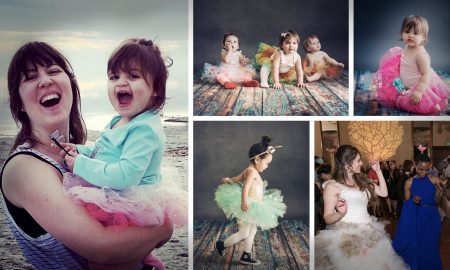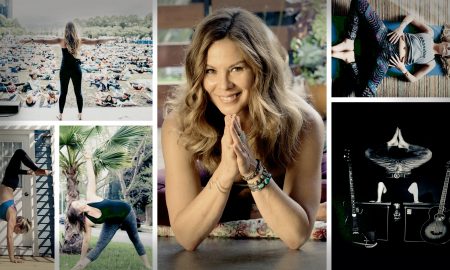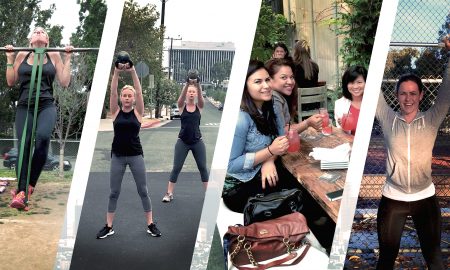
Today we’d like to introduce you to Astrid Heppenstall Heger.
Hi Astrid, so excited to have you with us today. What can you tell us about your story?
It was June 1984, Maria at age seven challenged me to create a program that was bigger than the 5×8 room that served as the first clinic home for the Violence Intervention Program then known as the Center for the Vulnerable Child. She came in with two officers from Newton Division after being found wandering next to the railroad tracks south of Los Angeles—tears made tracks through the dirt that covered her face, blood ran down her legs….she was heartbreaking. This was the first acute sexual assault case I had been asked to see. This new center was brand new at LAC+USC Medical Center and I was there without staff or salary. I had come to a moment in my life where I knew and understood how important it is to decide what your path in life will take. I had decided in Medical School, when my first son was born, to leave the idea of research and figure out why anyone could or would hurt a child.
Physical abuse had been a topic of conversation in pediatrics for a couple of decades, but now that I was sorting this out, I became perplexed and astounded to learn that cases of sexual abuse or assault were rarely if ever investigated or prosecuted. I decided that I needed to understand both–physical abuse and sexual assault. Thus…. it started with Center for the Vulnerable Child. But back to Maria, there she was wearing a dress four sizes too big for her, grey with dirt and blood stains ground into it, no underwear or shoes–broke my heart. But I had nothing–no clothes, no underwear, no bath or shower–not even a snack. So, I was desperate. I resolved to change all this. First, I sent a hospital clerk to the dollar store for underwear and shoes. I called on a women’s church group who after a brief visit from me had asked what they could do to help–I called and asked for clothes and shoes so she would be able to go to court to testify if needed. It was a week later when Maria returned to our clinic. She was more a presence that anything else I could sense her standing there behind me–not too close but close enough, so I turned, and she smiled. I gave her art supplies, paper and markers and all the new clothes in a small suitcase.
Some weeks later, she sat in the hall outside the courtroom downtown–dressed to the hilt, her black patent shoes did not reach the floor–but she looked wonderful and when the defense attorney came and saw her there–they pled guilty. That first day when I drove her home with her mother via MacDonald’s–I realized that I needed so much more–I needed support, a clinic a clothes closet, food on call, a shower and mental health services so when I asked a child, her family, how can I help — I knew that I could. On her block bars on the windows, graffiti as high as one can reach, barbed wires joined houses like hands reaching across the dirt vacant lot keeping the pit bulls off the sidewalk. I knew that I needed to do so much more than just being the first center in the US or world for that matter that was a center of excellence for child abuse including sexual abuse and assault. I needed to change the landscape for these children and their families. It is exciting to contemplate that possibility–but what remains most important that in those years and the years since that we have had a focus on healing and making children and women whole again. What a gift; what a journey!
Shortly after opening the doors to child abuse (both physical and sexual) it became clear that we must guarantee that the children were seen 24/7 as needed–even if we did not have staff; I could take call from home and come in when needed. Within weeks I was overwhelmed and was forced to propose that I would have to close the clinic–this resulted in a response from the County of LA that funded all start-up costs for our clinic and finally, I was able to hire someone to answer my phone. The Sexual Assault/DV programs: Teresa was brought in by LAPD one Monday morning. They had just found her dumped on the sidewalk downtown after being abducted on Friday when she stopped for gas late that night. She was home from college. She had been raped over the weekend and then finally pushed out of her car onto the sidewalk. LAPD brought her to VIP asking us to assess saying “We are not going to go to another ER where we are going to wait for at least 12 hours for her to be seen by doctors who have no idea how to do a rape examination.” It was that morning that the Sexual Assault Center was founded. But what that meant was more night calls and days that seemed to take up 24 hours. Quickly DV victims were walking in the clinic asking for help–“I know that you provide care to women who have been assaulted–my husband is trying to kill me and our twins.”
Elder Abuse Clinic: It was the first day of my tenure here at LAC+USC Medical Center and I was sitting in the hallway of the X-Ray department, waiting to get my chest x-ray in order to meet the attending staff requirements. I could see into one of the Xray room and there was an Elderly Hispanic woman with both arms in slings and a bandage on her head–she was telling the technician that she needs to go to the bathroom and he could not understand her Spanish–so there was a confrontation in motion. I stepped in and took her to the bathroom and helped her undress and dress–and then asked her about her injuries—and she told me that her son in law had thrown her down the stairs. Who did she tell? There was no one–so this evolved into the Elder Abuse Program. During this time, we were asked to take on the Elder Abuse Team for the County of Los Angeles. This then became the Adult Protection Team clinic with both Elder Abuse and Geriatrics housed in a newly renovated (by VIP) clinic at the County Medical Center. Progress: The growth of VIP in the direction of providing care for all victims of family violence and sexual assault and ultimately creating a non-profit with a focus on healing and prevention came as a result of what we were asked to do by our community and the community of social workers and law enforcement, and medical professionals, as well as patients, who relied on our services. With the increasing demand for our services, it became clear that we needed to grow our staff in order to continue to be open 24/7.
We also needed to have access to mental health, case management and care coordination for all of our patients. We first created a document for the County BOS that pointed out that by being here all the time that we were able to keep thousands of children out of foster care that was saving the County millions of dollars every year. It was with their support that VIP was able to hire additional staff for the medical portion of the VIP. Additional services were added as we met patients and families with unique needs. The community asked for more. The need for mental health support and advocacy for these families became acute. The County was unable to provide us with funding directly through our affiliation with County health services to we formed a non-profit in order to form a partnership with the Department of Mental Health for counseling, case management and care coordination. This is the VIP-Community-based Mental Health Center–and our non-profit designation. But now with a non-profit status, we realized that we could raise money to begin the healing process for our families. I would be able to have underwear, clothes, food and pay for plastic surgery, housing and even fix cars for families who were having problems with transportation and more.
Alright, so let’s dig a little deeper into the story – has it been an easy path overall and if not, what were the challenges you’ve had to overcome?
Space was always a challenge but became a major problem as more and more services were added. We had started in that small room where I first saw Maria, now we had programs ranging from child abuse to elder abuse and everything in between and we were growing our support service with mental health and identifying funds to support the essential non-essentials. We had graduated from that small room into an abandoned trailer outside the back door to the Pediatric hospital. But we only had one exam room and things were so crowded it was hard to get things done. Then the trailer was condemned along with the hospital after an earthquake and we had to have the trailer moved. This gave us an opportunity to upgrade the inside so we had three examination rooms and when “the Man from FEMA came” he loved us and despite opposition from the hospital (I do not care what you do for black or brown women and children) offered us one more trailer we were able to double our medical space and then add another trailer on adjacent lot to house our mental health services.
Thus, we became a highly efficient trailer park! It was with funds raised through our non-profit that we were able to create an entire campus of advocacy and services for our children and our families (The S. Mark Taper Foundation Family Advocacy Center, The Santana House, The Leonard Hill Hope Center as well as renovating a new clinic and more in the Outpatient Department of the Medical Center. The Alexis Project Sitting on the park bench outside of the Medical Clinic, I was thinking about how I needed to change or add services for the teens I was watching coming to the shelter we had created for DCFS and the newly detained children on their way to foster care. A 16-year-old came and sat next to me on the bench–“So I asked her “how can I help you.” She looked at me like these were words that she has never heard. “I am transgender, and I need a place to go….and I need HOPE. “This was the moment when I realized that I had to start a clinic for children and youth in our social and medical system that focused special services for LGBTQ youth.
Support from Mitch Katz who was then the leader of DHS created the ability to hire physicians and staff for this new clinic. I then launched myself towards bringing an identity to this clinic…. I needed a name. That year at VIP’s annual support group development brunch and more, I pitched the need for support for this clinic–within days both Rosanna and David Arquette were in my office offering to help us with funding but also agreed to let us use their sister’s name Alexis, as the identity for the clinic The Alexis Project is in a non-stop growth period. We have a specialist starting in May with a focus on Transgender health. We are so very proud of our namesake and the quality and quantity of the staff and services given in the clinic. We have a new support group for this clinic—the SOULgbtq at VIP. Community-based Assessment and Treatment Center: I was attending the child death review team when Lance Helm’s death was brought forward for discussion. He had been seen at a number of emergency rooms in the County but had never been officially presented to the Court requiring removal of this two-year-old from the home of his drug-addicted father.
However, his Grandmother Helms repeatedly asked the Court to intervene to protect Lance, but the legal system expressed their inability to get an opinion and valid diagnosis that they could rely on in regard to the abuse. I was sitting next to the Coroner, and I could take it no longer and I stood up and left (never to return) and said to Dr. Lakshmanan – I am going to try and change this. It was thus that with money from First5 of Los Angeles a County-wide system of care for at-risk children was started here at VIP. Within a few months, we also used funding provided by the Parsons Foundation and from a family who had donated a million dollars to VIP to promote safety — we used these funds to hire doctors and nurses to start a specialized clinic for children at risk for foster care. We also automated the medical records and the referral process by DCFS in order to prevent losing any child that needed to be seen. It was this system that turned child protection on its head and with the automated system, we were able to guarantee that if children were referred then we could see that fact but also follow the progress of the child through the system.
Over the first ten years of this system, we saw the death rate from caretaker abuse drop from the high of 60 per year to less than five. We saw the foster care rate cut in half. The system spread throughout the County and was used by the County in response to a lawsuit charging LA with neglect for not taking good care of foster children–and the County adopted our system as the standard of care. This was a great win for the Children of Los Angeles. Fetal Alcohol Spectrum Disorder: It was shortly after opening our new Program that it was clear that these children who had been exposed to alcohol during their fetal growth time were seriously impacted resulting in developmental challenges and actual brain damage. FASD is the single largest factor in developmental delay in the Country and VIP became one of only two centers in the State with diagnostic and treatment services. FASD is also the accelerant in the disproportionate number of AA children in foster care, juvenile justice and ultimately San Quentin. Now all of this seems so arduous and overwhelming–I am tired just remembering.
But then there is… HEART: At the time when I was overwhelmed by the need for more–for underwear, food, clothing plastic surgery dental surgery, tutors and housing–HEART was born. Created by Eve Somer age 22…. she asked me the key question…. How can I help–and thus was born the support group that has paved the way to healing. I am forever in the debt of Eve and her friends, our colleagues and more for helping create the platform, the foundation that forever changed our ability to care for the families; the women and the children who are and were living with poverty, loneliness and violence. You have seen some of the struggles if you read above…..Nothing was easy–it was always an effort to make a bureaucracy understand that these are our people, our neighbors, or families and our friends. That we need to take care of them and make them important. So often because they are poor, minority immigrants that they are easy to discard. This has become a mission–to bring them forward and support them–So VIP has been engaged in feeding hundreds and tutoring their children throughout the pandemic.
We are so proud of our supporters. We are blessed by HEART–we can come to this clinic knowing that they are there!!! And then comes their children and their friends–in HEARTBEATS. These teenagers mentor and tutor our children–this past year is has made a huge difference. But perhaps you are living in a time when we are beginning to focus on the biggest obstacle of all. — This inner racism and sense that we do not need to worry or care about those without. In reality, the biggest challenge is trying to engage those who consistently practice “cheap grace” i.e. they assume that someone else is going to do the heavy lifting and therefore, they need not worry or invest. I want to shout from the highest building in Los Angeles–loneliness breeds violence and abuse; being poor is lonely–we need to invest in the future of the brown or black child; the poorest of children and their family–we need to replace fear with self-esteem.
Can you tell our readers more about what you do and what you think sets you apart from others?
Well first off, you cannot be in this field of medicine and not learn quickly to focus on the individual child or family; for the volume, the entirety — it can overwhelm you. Some have tried to do it alone and now they live in a cabin on an island a solitary way created by feeling powerless and needing affirmation each day. This is not the world for affirmation; your patients do not come up to you in your town to thank you for saving their life. They may see you, but they are quick to look away. You are an embarrassment to them who want to forget that they were once victims of violence.
So, I am someone who can’t practice cheap grace–I hate the talking and love the doing. I get restless when things are not happening, growing. I am determined and love a challenge. I see negativity on the part of others as a challenge. In the doing comes satisfaction and unexpected benefits! I guess I am my father’s true daughter–he who rarely sat down and worked full-time from the time he was ten, starting as a child laborer in the steel mills of England. So it was that one afternoon I found a gorgeous young woman doing her federal community service time sorting clothes in our basement before putting them away for our patients. I began a conversation with her about how she came to be here in VIP–“you don’t remember me do you?………I came here with a group of women last year and we came looking for you and found you scrubbing the men’s bathroom floor before a planned celebration of the next day….I wanted to volunteer in your clinic–if the CEO was willing to scrub floors then I belonged here.” It is always in the doing that changes come. I believe that right now, we must act in order to bring change to inequities and poverty. This is what we are trying to do now.
For example, I do not want to see all the “black lives matter” movement die a slow death due to loss of momentum. I feel that #metoo impact was blunted by not changing that into #wetoo and taking on the issue of women who must continue to suffer sexual aggression in order to continue to work and support their children as a single moms. I also believe that we need to fight homelessness–particularly women who cannot escape a violent house. This violent environment is not a home and women need to find safety. This may be next. So, VIP is looking to create a response that is real and can change outcomes for AA and Hispanic families; for women and children living with poverty and violence, isolated and alone. Or as one of the young women in our community said, “being poor is lonely.” I cried at the thought… So I do not believe that we can cure poverty–but we can work on loneliness. So, when asked how I can do this work–I say how can you not do it–I love my job, but I hate what I do. As my goddaughter said to me once–you are the richest women I know.
What would you say have been one of the most important lessons you’ve learned?
I have learned that to be an effective leader, you not only have to care about what you do, you need to know the why of what you do and need to create within your clinic, your office a sense of caring about the success of those around you. There are people in charge who can tell you what to do and there are those you want to follow–I aspire to be the latter.
Contact Info:
- Email: [email protected]
- Website: www.violenceinterventionprogram.org
- Instagram: vip_cares
- Facebook: ViolenceInterventionProgram
- Youtube: https://www.youtube.com/channel/UCnz0IcuxNQt5cAzl0DMLdQg























